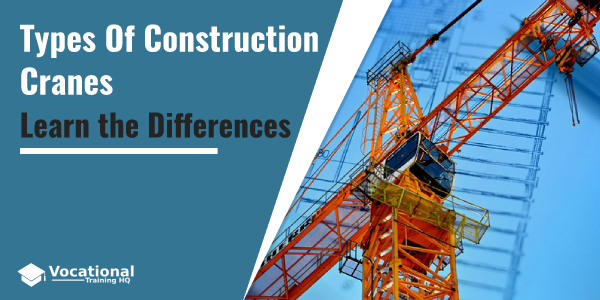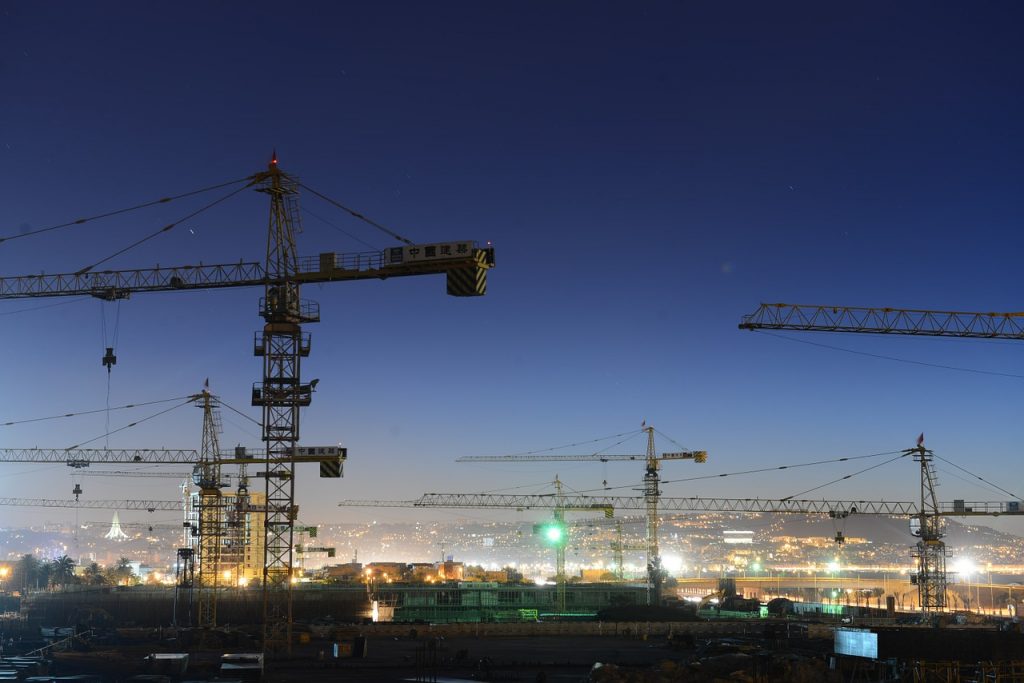Cranes are widely used in modern society as these machines are very useful when it comes to carrying heavy objects.
There is a variety of industries that use this equipment but they are the most popular in the construction and manufacturing industries.
If you are interested in becoming a crane operator, you need to know that there are numerous types of cranes.
During your training, you can learn how to operate all of them or only some types of cranes.
Article Table of Contents
What Is a Crane?
A crane is a type of heavy machinery that is equipped with cables and sheaves used for picking and moving heavy objects.
This equipment was invented in ancient Greece and it was named after the tallest in the world bird – crane.
At the very beginning, it was used to move objects that are difficult to get access to.
Nowadays, these huge structures can be temporary or be attached to a vehicle or a certain spot.
Many years ago, it was humans and animals that power cranes but nowadays it can be operated by only one person.
It can be crane operators who control this equipment or it can be controlled with the help of a push-button or radio controls.
Crane operators don’t only operate cranes but also ensure the safety of the equipment and working environment.
Below, you can find information about 7 main types of cranes.
Rough Terrain Crane
This type of crane is connected to an undercarriage with rubber tires.
Usually, it is used for off-road purposes including rougher construction sites with uneven, rocky terrain.
The crane can be leveled during hoisting with the help of outriggers that are extended vertically and horizontally.
Mobile Cranes
This type of cranes is the most widely used especially when it comes to the construction area.
It consists of a movable platform with an attached telescopic boom or steel truss.
This hydraulic crane has incredible mobility so it is widely used.
Another important point is that it can be adapted to construction sites of various sizes.
Tower Cranes
Tower crane is a type of a balance crane that is mounted on the ground.
These cranes are very high (up to 265 feet tall) and have an incredible reach capacity (230 feet).
As a result, these cranes are widely used in different construction sites.
They are absolutely required for different building projects.
One other important point is that they can lift very heavy objects that weigh up to 19 tons.
Telescopic Cranes
These cranes have a boom made of numerous tubes fitted inside each other.
Tubes are retracted or extended with the help of a hydraulic device and as a result, the boom changes its length.
Due to its mobility and adjusting capacity, this type of cranes is widely used in marine ports.
Also, they can carry cargo to the right containers.
Truck-Mounted Cranes
Truck-mounted cranes are also known as boom trucks.
This type of cranes is usually adjusted to rubber tire trucks in order to guarantee its maximum mobility.
These self-propelled cranes use outriggers for vertical and horizontal extensions.
Also, it helps to steady a crane when it carries around objects that can be as heavy as 50 tons.
They are used for construction works, repairing as well as for loading and unloading big and heavy cargo.
Loader Crane
Also known as folding boom cranes or knuckle-boom cranes, loader cranes use hydraulic devices.
Its electrical-powered arm is attached to a truck or a trailer and is used to move equipment into or out of a vehicle.
Made of foldable joints, this crane can fit in small spaces.
They can be of different sizes and have the capacity to carry up to 200 tons.
Overhead Crane
Overhead or bridge cranes are widely used in factories and numerous industrial environments.
They can be of different sizes and the largest ones are usually used in large manufacturing sites and shipyards.
The structure is a pair of parallel runways that are connected with a bridge.
Objects can be loaded on a trolley that moves along the beam at different angles.
Conclusion
Heavy cranes are widely used in various industries.
Applying for a heavy equipment training program, you can get lots of hands-on training and learn how to operate different types of machines.
You’ll be able to learn all the important aspects of this industry including different types of cranes and their specifications.
After completing their training, students can enter the workforce very soon.
Just make sure to choose an approved and accredited training program that will provide you with lots of hands-on experience and certification.
Read the full guide: How to Become a Heavy Equipment Operator

